
Space
45 Years Ago: Apollo 17 photos spotlight last moonwalkers
"We leave as we came... with peace and hope for all mankind," Apollo 17 commander Gene Cernan said as he took man's last steps on the moon.
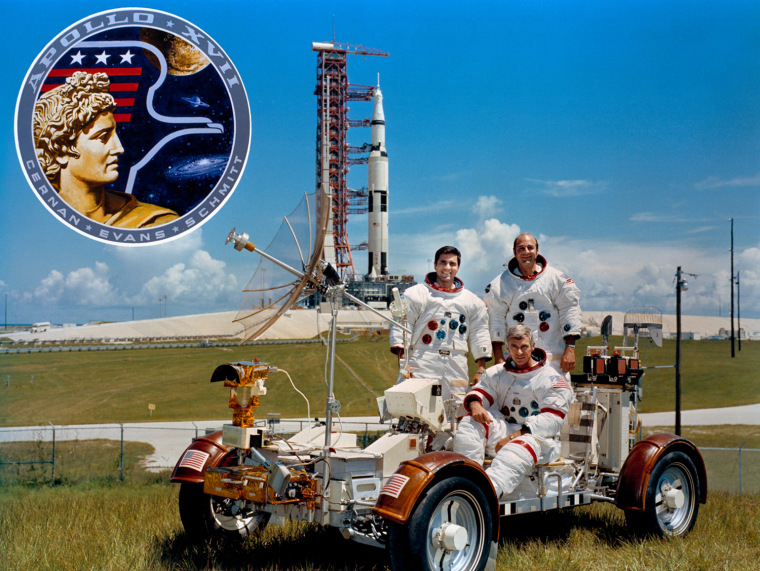
The Last Men on the Moon
It's been 45 years since the launch of Apollo 17, the last moon mission, on Dec. 7, 1972.
Above: Apollo 17 mission members pose on a lunar roving vehicle trainer in front of a Saturn 5 rocket at Kennedy Space Center in Florida. The mission's commander Eugene Cernan, seated, was a veteran of the Gemini 9A and Apollo 10 missions. Harrison "Jack" Schmitt, left, was lunar module pilot, and Ronald Evans was command module pilot.
The mission patch at upper left is dominated by the image of Apollo, the Greek sun god.
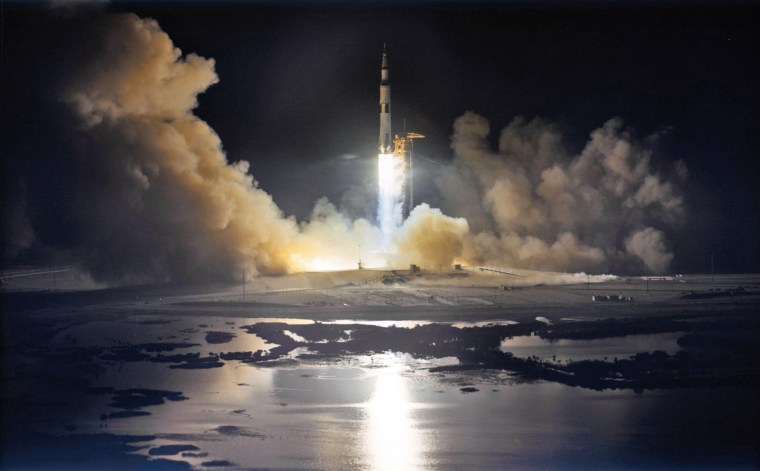

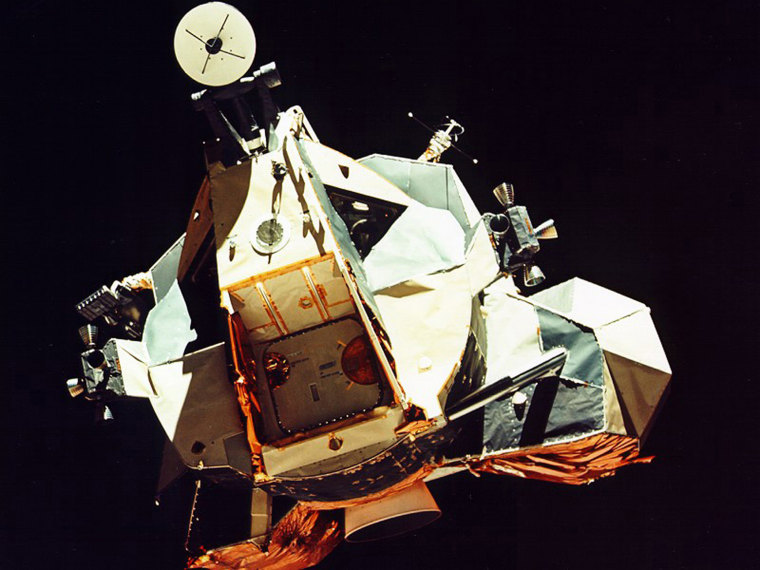
Apollo 17's Moonship
Awkward and angular looking, Apollo 17's lunar module Challenger was designed for flight in the vacuum of space. This picture, taken from the command module America, shows Challenger's ascent stage in lunar orbit.Small reaction control thrusters are at the sides of the ship with the bell of the ascent rocket engine underneath. The hatch allowing access to the lunar surface is visible in the front and a round radar antenna appears at the top.
This spaceship performed gracefully, landing on the moon and returning the Apollo astronauts to the orbiting command module in December 1972 — but where is Challenger now? Its descent stage remains at the Apollo 17 landing site, Taurus-Littrow. The ascent stage crashed nearby after being jettisoned from the command module prior to the astronauts' return to Earth.

Exploring the Surface
Apollo 17 commander Gene Cernan walks toward the lunar rover during a moonwalk at the Taurus-Littrow landing site. Cernan and Harrison Schmitt descended in the lunar module to explore the moon's surface while Ronald Evans remained in lunar orbit aboard the command module.
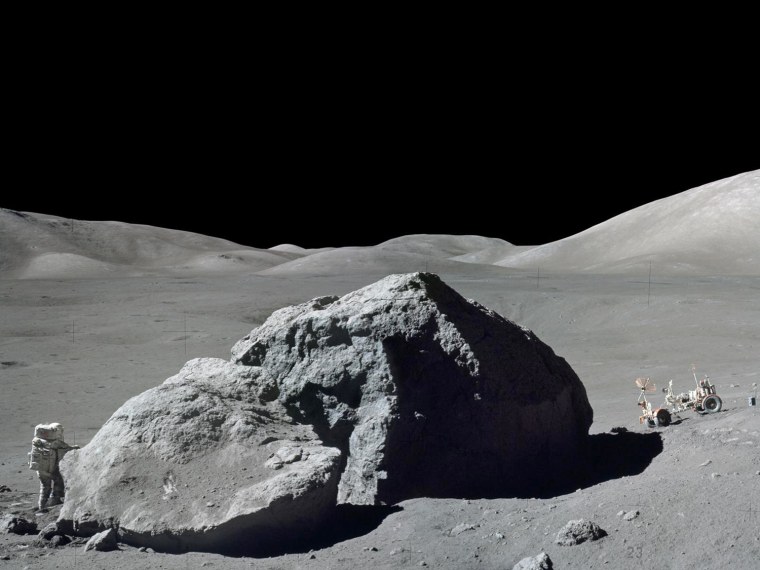
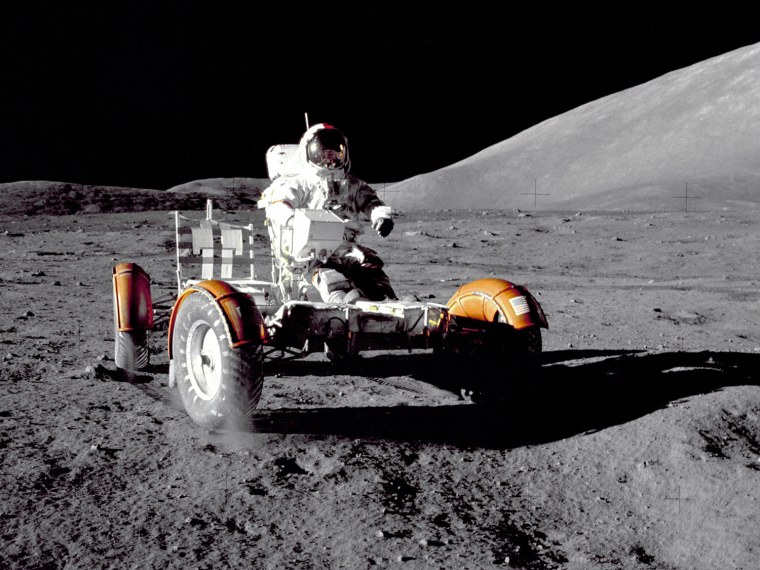
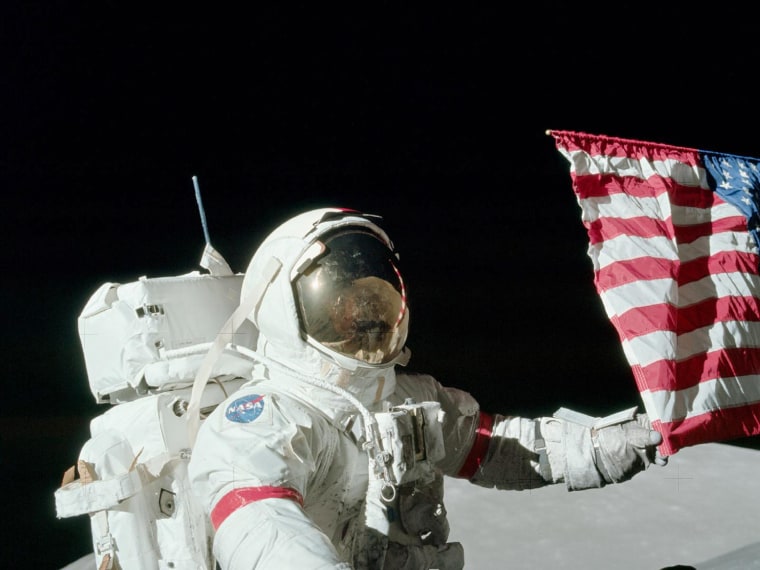

The Pilot
Schmitt displays several days of beard growth aboard the Challenger lunar module on the moon's surface.
Schmitt was the first person initially trained as a scientist to walk on the moon. Originally a geologist, he was selected by NASA in June 1965 along with a group of other scientist-astronauts — the first group not to be test pilots.

The Commander
Cernan is photographed inside the lunar module on the moon's surface after the mission's second moonwalk. His spacesuit is grimy with moondust.
Cernan, the last man on the moon, traced his only child's initials in the dust before climbing the ladder of the lunar module the last time.
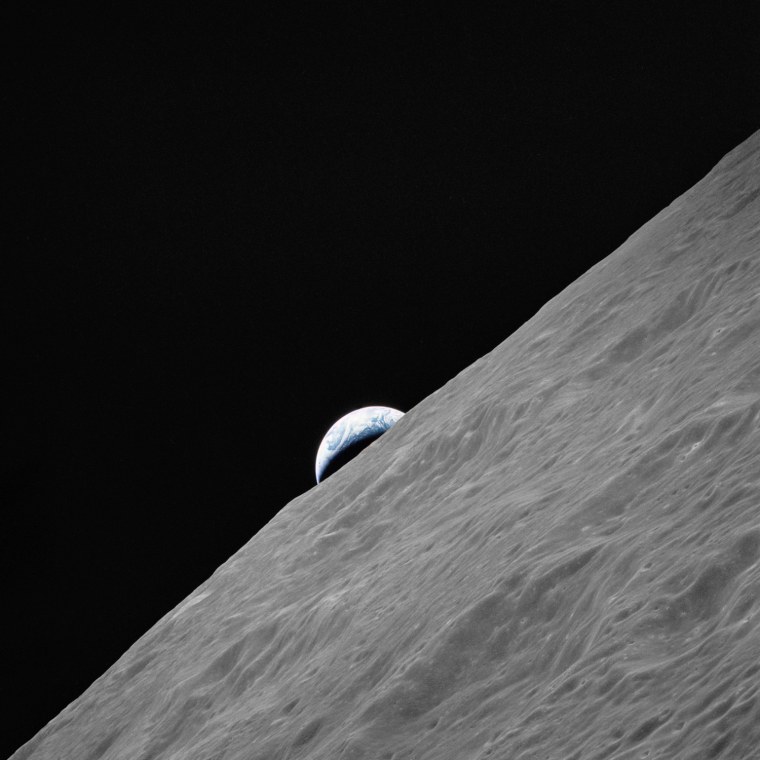

Splashdown
The Apollo 17 spacecraft, carrying Cernan, Evans and Schmitt, glides to a safe splashdown on Dec. 19, 1972, about 350 nautical miles southeast of American Samoa. The astronauts were flown by recovery helicopter to the USS Ticonderoga, slightly less than an hour after the completion of NASA's last manned lunar mission.
PHOTOS: The 12 Men Who Walked on the Moon
Month in Space Pictures: A fireball from beyond and a storm on Jupiter